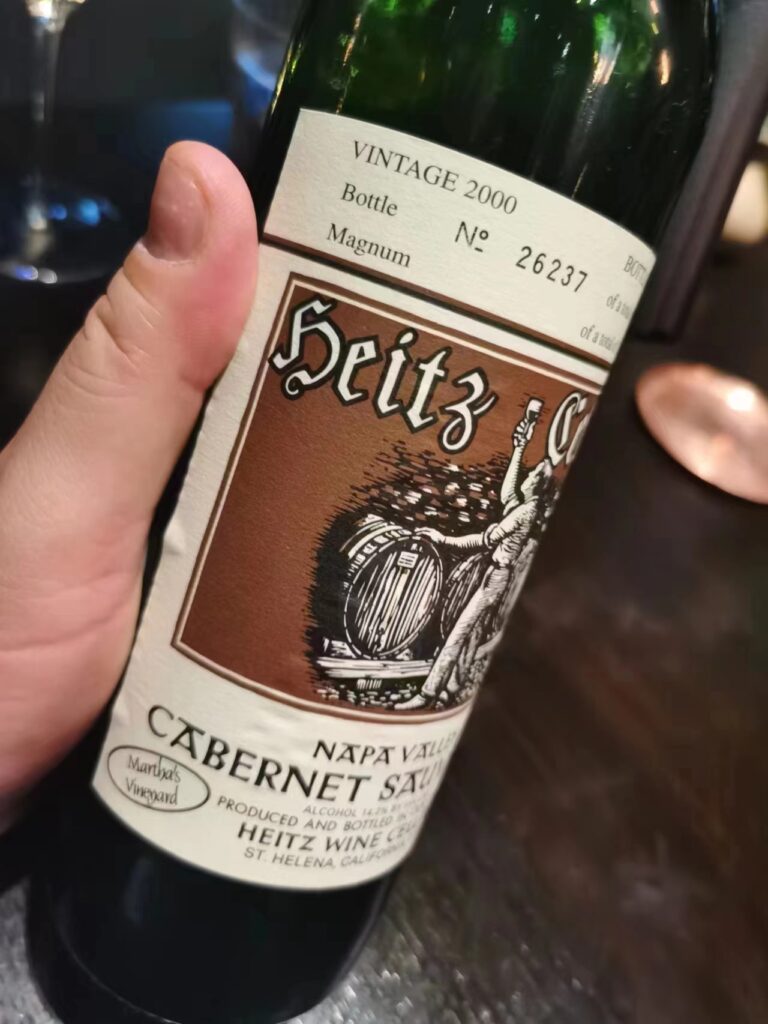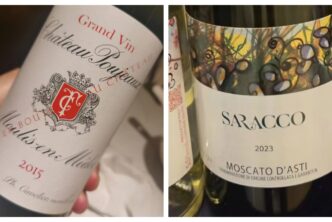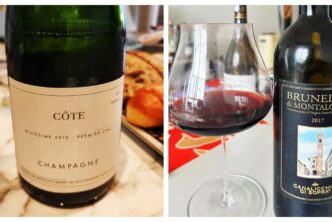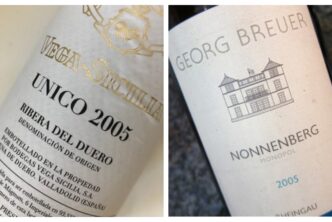Domaine des Comtes Lafon 2019 Meursault Clos de la Barre 94

On Tuesday evening June 6th, three of us dined at one of Beaune’s best and most venerable restaurants: Ma Cuisine. Opened in 1996 by Pierre Escoffier, it serves high quality, classic, perfectly executed French food along with one of the best wine lists in the city. It is not only the superb and seemingly endless selection of Burgundies which defines Escoffier’s great list. There are two full pages of Chateau d’Yquem covering over fifty vintages, for example. I doubt that this is matched, much less exceeded, anywhere else in France. There is always a very healthy offering of Rhône wines for those who may have maxed out on Burgundies during a visit. But on this evening, I chose one of my favorite white Burgundies: The Comte Lafon Meursault Clos de la Barre. The vintage was 2019—a year which made for juicy yet energetic white Burgundies despite the heat. A very small vineyard of some two hectares (five acres) it is a monopole of the Lafon estate. The Clos de la Barre is a steep stony site whose fruit often ripens later than most of the other vineyards in Meursault. To me it is the signature white wine made by Dominque Lafon: his most personal wine. If it lacks the majesty and complexity of his Premier Crus, it is nonetheless a wine of stunning richness, spice and density, and it can age over many years. It is always a joy to drink. Fortunately, 2019 was a vintage in which many white Burgundies came out of the barrel smiling. The relatively small yields in 2019 favored dry extract which concentrates the minerality in the texture of the wines. The fullness of body was balanced by pulsating acidity and plenty of Meursault meatiness. A fine long finish completed what was a wonderful experience. White wine does not get much better than this. Served with the expertly prepared crispy ris de veau, this was a dining experience that alone made the trip worthwhile. Drinking Window: 2023-2030.
Heitz Cellars 2000 Cabernet Sauvignon Martha’s Vineyard Napa Valley California 93

by Ian D’Agata
I have always had a soft spot for the wines of Joe Heitz: if you know me at all, then you realize it couldn’t be otherwise, given he loved and made, among many fantastic wines, an also fantastic Grignolino wine. But clearly, it’s the Cabernet Sauvignon wines that made the man’s and winery’s reputation. They are also wines I know quite well, given that beginning in the 1990s I bought a large quantity of older vintages of Napa Valley Cabs, including numerous bottles of the Martha’s and Bella Oak vineyard bottlings. In short, I have always been a fan (and did I mention that I loved the Grignolino Port too?).
The Heitz Cellars 2000 Cabernet Sauvignon Martha’s Vineyard Napa Valley is bright, deep red-ruby with a garnet rim. It offers expressive perfume of red cherry, blackcurrant, mint, cedar and minerals. Then enters full and suave in the mouth, is nicely delineated in the middle and on the ultra-smooth finish, boasting lovely red and blue fruit flavours enlivened by the vineyard’s highly typical and easily recognizable sweet balsamic eucalyptus note. The aftertaste is long, sultry and multilayered. Aged for one year in American oak barrels, then two and a half more in French oak barrels (of Limousin oak, a looser-grained French oak that may have contributed, along with ripe old age, to this wine’s pleasant mellowness. You might say this neatly combines a Euro winemaking sensibility with a California glossiness of fruit. The Martha’s Vineyard bottling was the first Napa Valley wine ever to carry a vineyard designation, and there are many vintages of it that rank with the world’s best wines ever made: the 2000 is not the biggest or most concentrated Martha’s you’ll ever taste, but it’s very refined; and there’s a lot to be said for balance, which this beauty has in spades. It all adds up to truly lovely stuff from one of California’s historic producers and arguably the State’s most famous Cabernet Sauvignon vineyard site. Given the vintage, this was never a behemoth or blockbuster-type Napa Valley Cab, and so it has always been somewhat underrated, such that it was usually accessibly priced in stores and restaurants, making my day anytime I came across a bottle. The fact that Joe Heitz, who began making this wine as a single vineyard bottling in 1966 by renting fruit from the small vineyard owner Tom May had named after his wife May, died in December 2000, makes this an even more special drink than it would normally already be. It is always a pleasure for me to raise a glass to Heitz’s memory and talent with this beautiful wine. Drinking window: 2023-2032.

 中文
中文



